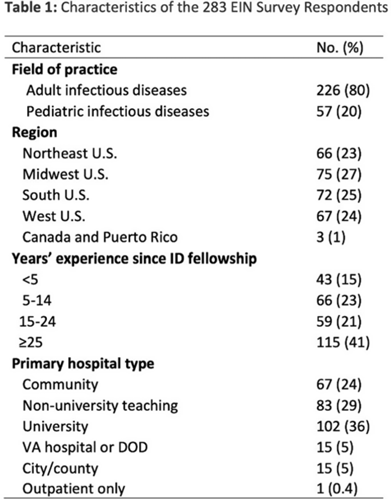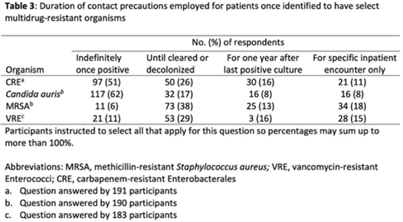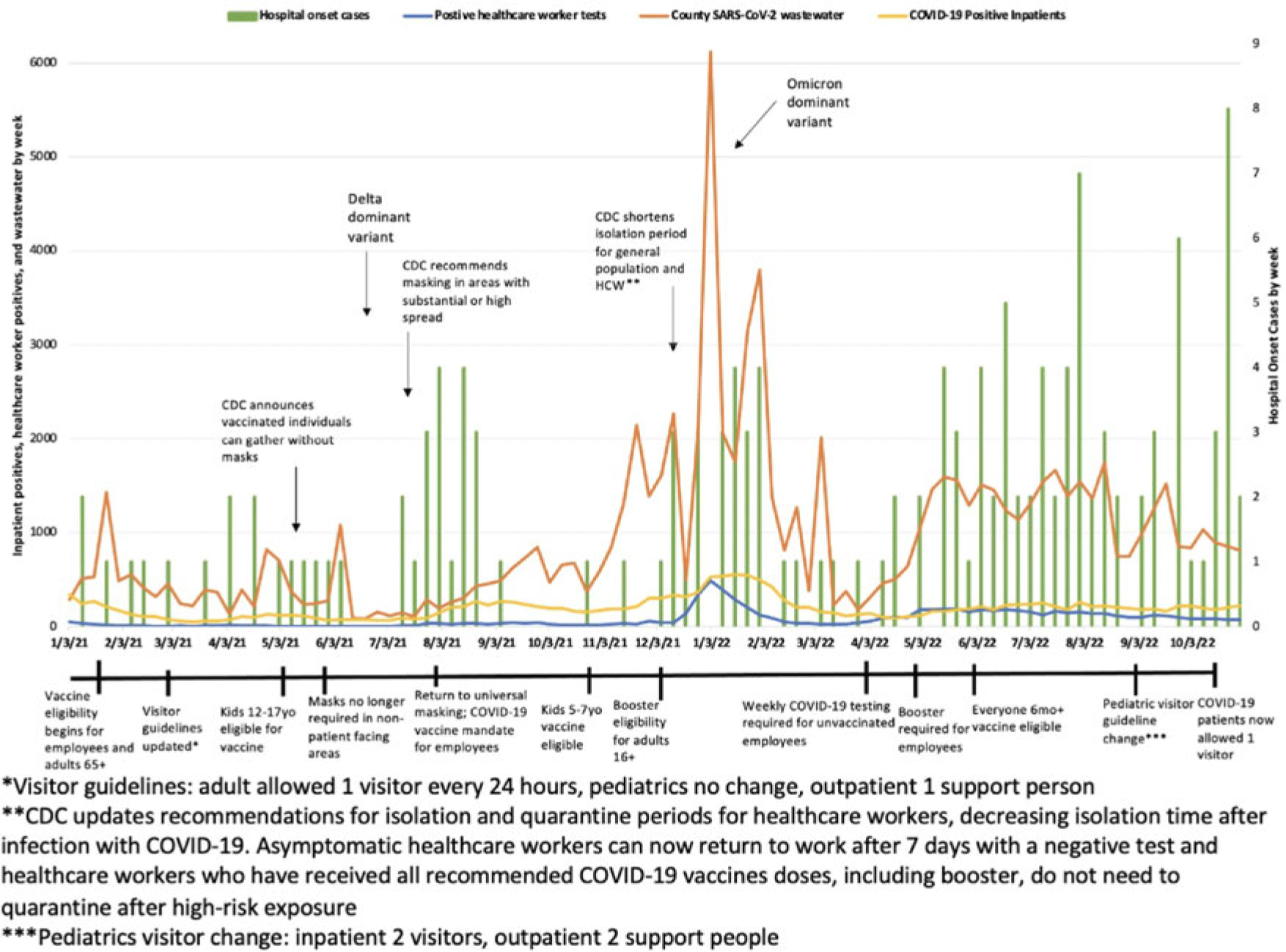200 results
546 Using Contingency Management to Understand the Cardiovascular, Immune and Psychosocial Benefits of Reduced Cocaine Use: A Protocol for a Randomized Controlled Trial
- Part of
-
- Journal:
- Journal of Clinical and Translational Science / Volume 8 / Issue s1 / April 2024
- Published online by Cambridge University Press:
- 03 April 2024, p. 163
-
- Article
-
- You have access
- Open access
- Export citation
Population and hospital-level COVID-19 measures are associated with increased risk of hospital-onset COVID-19
-
- Journal:
- Infection Control & Hospital Epidemiology , First View
- Published online by Cambridge University Press:
- 18 March 2024, pp. 1-3
-
- Article
-
- You have access
- Open access
- HTML
- Export citation
The prevalence of gram-negative bacteria with difficult-to-treat resistance and utilization of novel β-lactam antibiotics in the southeastern United States
-
- Journal:
- Antimicrobial Stewardship & Healthcare Epidemiology / Volume 4 / Issue 1 / 2024
- Published online by Cambridge University Press:
- 18 March 2024, e35
-
- Article
-
- You have access
- Open access
- HTML
- Export citation
Implementation of contact precautions for multidrug-resistant organisms in the post–COVID-19 pandemic era: An updated national Emerging Infections Network (EIN) survey
-
- Journal:
- Infection Control & Hospital Epidemiology , First View
- Published online by Cambridge University Press:
- 14 February 2024, pp. 1-6
-
- Article
-
- You have access
- Open access
- HTML
- Export citation
Simultaneous submission of seven CTSA proposals: UM1, K12, R25, T32-predoctoral, T32-postdoctoral, and RC2: strategies, evaluation, and lessons learned
-
- Journal:
- Journal of Clinical and Translational Science / Volume 8 / Issue 1 / 2024
- Published online by Cambridge University Press:
- 25 January 2024, e33
-
- Article
-
- You have access
- Open access
- HTML
- Export citation
A severe acute respiratory coronavirus virus 2 (SARS-CoV-2) nosocomial cluster with inter-facility spread: Lessons learned
-
- Journal:
- Infection Control & Hospital Epidemiology / Volume 45 / Issue 5 / May 2024
- Published online by Cambridge University Press:
- 04 January 2024, pp. 635-643
- Print publication:
- May 2024
-
- Article
-
- You have access
- Open access
- HTML
- Export citation
78 Examining the Association Between a Patient's Diagnosis and Occurrence of The First Error on Trails B
-
- Journal:
- Journal of the International Neuropsychological Society / Volume 29 / Issue s1 / November 2023
- Published online by Cambridge University Press:
- 21 December 2023, p. 280
-
- Article
-
- You have access
- Export citation
Use of contact precautions for multidrug-resistant organisms and the impact of the COVID-19 pandemic: An Emerging Infections Network (EIN) survey
-
- Journal:
- Antimicrobial Stewardship & Healthcare Epidemiology / Volume 3 / Issue S2 / June 2023
- Published online by Cambridge University Press:
- 29 September 2023, pp. s102-s103
-
- Article
-
- You have access
- Open access
- Export citation
Hospital-onset COVID-19: Associations with population- and hospital-level measures to guide infection prevention efforts
-
- Journal:
- Antimicrobial Stewardship & Healthcare Epidemiology / Volume 3 / Issue S2 / June 2023
- Published online by Cambridge University Press:
- 29 September 2023, p. s7
-
- Article
-
- You have access
- Open access
- Export citation
Agricultural Research Service Weed Science Research: Past, Present, and Future
-
- Journal:
- Weed Science / Volume 71 / Issue 4 / July 2023
- Published online by Cambridge University Press:
- 16 August 2023, pp. 312-327
-
- Article
-
- You have access
- Open access
- HTML
- Export citation
Psychological interventions for cancer-related post-traumatic stress disorder: narrative review
-
- Journal:
- BJPsych Bulletin / Volume 48 / Issue 2 / April 2024
- Published online by Cambridge University Press:
- 08 June 2023, pp. 100-109
- Print publication:
- April 2024
-
- Article
-
- You have access
- Open access
- HTML
- Export citation
Risk factors for long coronavirus disease 2019 (long COVID) among healthcare personnel, Brazil, 2020–2022
-
- Journal:
- Infection Control & Hospital Epidemiology / Volume 44 / Issue 12 / December 2023
- Published online by Cambridge University Press:
- 05 June 2023, pp. 1972-1978
- Print publication:
- December 2023
-
- Article
-
- You have access
- Open access
- HTML
- Export citation
Cannabis use as a potential mediator between childhood adversity and first-episode psychosis: results from the EU-GEI case–control study
-
- Journal:
- Psychological Medicine / Volume 53 / Issue 15 / November 2023
- Published online by Cambridge University Press:
- 04 May 2023, pp. 7375-7384
-
- Article
-
- You have access
- Open access
- HTML
- Export citation
The association between reasons for first using cannabis, later pattern of use, and risk of first-episode psychosis: the EU-GEI case–control study
-
- Journal:
- Psychological Medicine / Volume 53 / Issue 15 / November 2023
- Published online by Cambridge University Press:
- 02 May 2023, pp. 7418-7427
-
- Article
-
- You have access
- Open access
- HTML
- Export citation
Detection of severe acute respiratory coronavirus virus 2 (SARS-CoV-2) in the air near patients using noninvasive respiratory support devices
-
- Journal:
- Infection Control & Hospital Epidemiology / Volume 44 / Issue 5 / May 2023
- Published online by Cambridge University Press:
- 15 March 2023, pp. 843-845
- Print publication:
- May 2023
-
- Article
- Export citation
Infection prevention and antibiotic stewardship program needs and practices in 2021: A survey of the Society for Healthcare Epidemiology of America Research Network
- Part of
-
- Journal:
- Infection Control & Hospital Epidemiology / Volume 44 / Issue 6 / June 2023
- Published online by Cambridge University Press:
- 14 March 2023, pp. 948-950
- Print publication:
- June 2023
-
- Article
-
- You have access
- Open access
- HTML
- Export citation
Success stories cause false beliefs about success
-
- Journal:
- Judgment and Decision Making / Volume 16 / Issue 6 / November 2021
- Published online by Cambridge University Press:
- 01 January 2023, pp. 1439-1463
-
- Article
-
- You have access
- Open access
- HTML
- Export citation
Belief bias and representation in assessing the Bayesian rationality of others
-
- Journal:
- Judgment and Decision Making / Volume 14 / Issue 1 / January 2019
- Published online by Cambridge University Press:
- 01 January 2023, pp. 1-10
-
- Article
-
- You have access
- Open access
- HTML
- Export citation
Chapter 16 - Interprofessional Education in Mental Health Services
- from Section 4 - Bridging the Gaps: Foundation Years and Interprofessional Education
-
-
- Book:
- Clinical Topics in Teaching Psychiatry
- Published online:
- 24 November 2022
- Print publication:
- 08 December 2022, pp 187-198
-
- Chapter
- Export citation
Child maltreatment, migration and risk of first-episode psychosis: results from the multinational EU-GEI study
-
- Journal:
- Psychological Medicine / Volume 53 / Issue 13 / October 2023
- Published online by Cambridge University Press:
- 28 October 2022, pp. 6150-6160
-
- Article
-
- You have access
- Open access
- HTML
- Export citation







